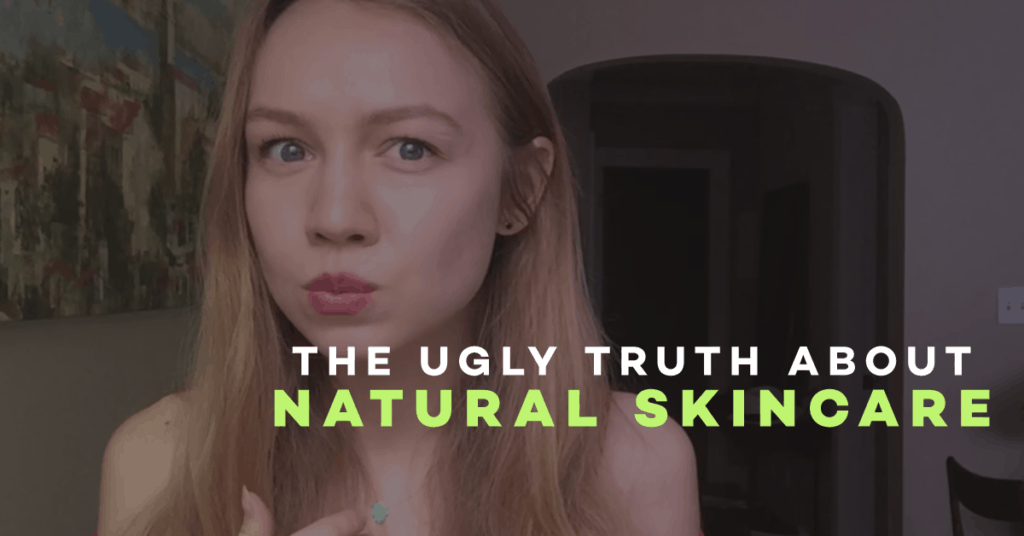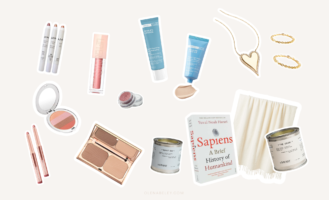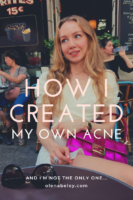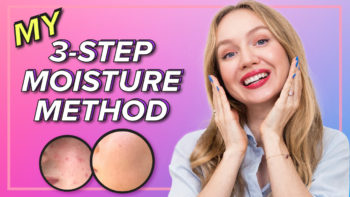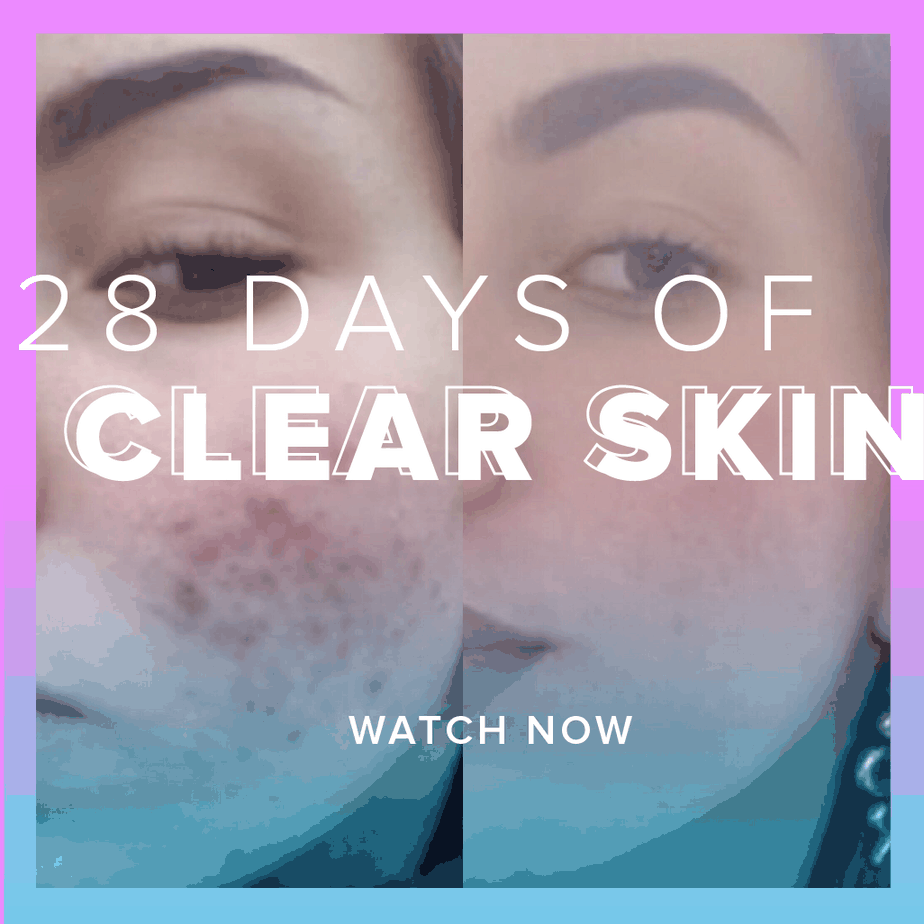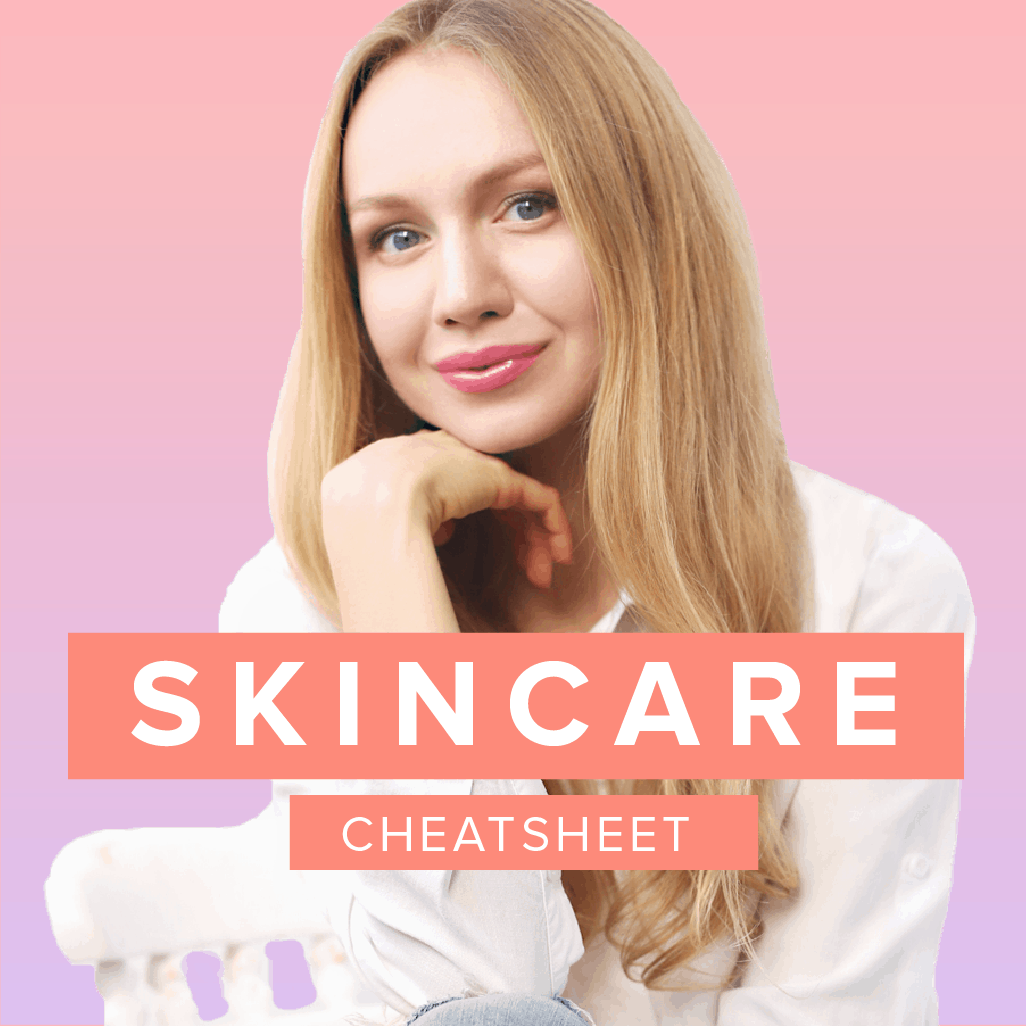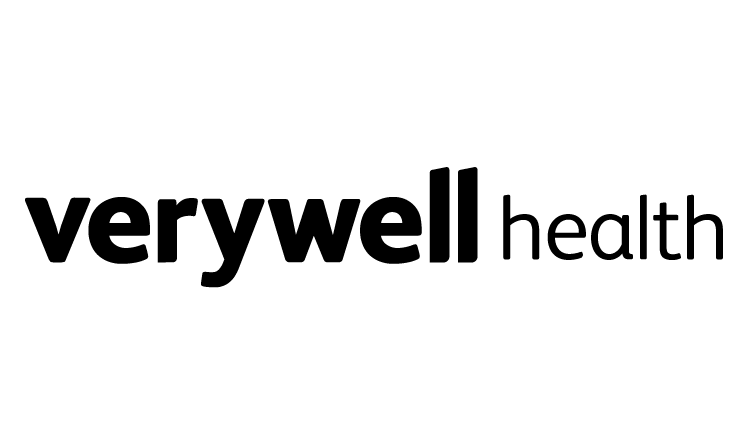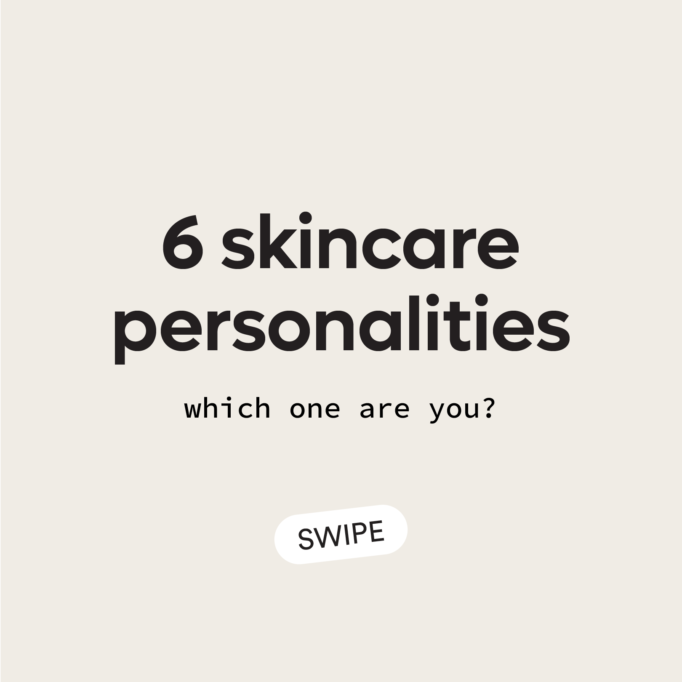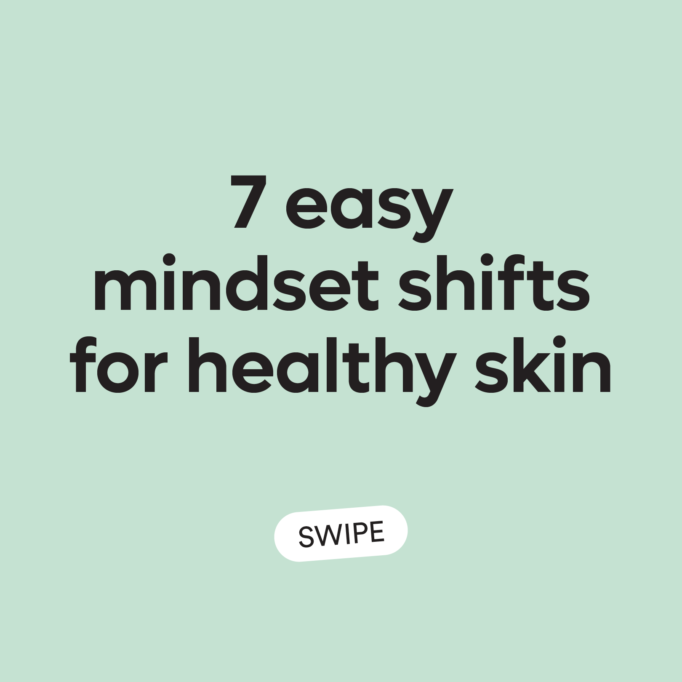I did an interview last year with natural skincare guru Tracy Raftl, and her story inspired me to try natural skincare. It sounded legit, just use honey and jojoba oil and your skin will look amazing!
Suddenly, all my benzoyl peroxide and salicylic acid fell by the wayside, and I started vilifying these products for making me dependent on them.
I believed the stories that natural skincare companies based their marketing on:
- That my skin can’t breathe under synthetic products.
- That my skin needs to detox from chemicals.
- That I am purging from toxins after switching to natural skincare.
- That oil helps dissolve oil plugs and clear the skin.
- That oil tricks my skin into producing less oils.
- That oils are the best moisturizers because they’re similar to sebum.
Luckily, I didn’t throw out my chemical products — I just hid them from view as I embarked on my natural skincare journey.
The results were disastrous. I went from having clear skin (because I had the most legit skincare routine known to man!) to breaking out NON STOP.
Every day I woke up with more breakouts than the previous day. The last thing I wanted to do was blame my natural skincare — how could it be? I was putting ALL NATURAL products on my face! So natural, that I could ingest them without getting poisoned.
But the problem was that I started treating my skin like my stomach, as though it could absorb nutrients and as though I was NOURISHING it with products.
Your Skin Is Not A Stomach
Here’s something you need to understand about skin. Skin keeps things out, it doesn’t absorb things. Skin doesn’t get its “food” or oxygen from the outside through the pores, it gets nutrients and oxygen from your blood!
The blood vessels in your lower dermis literally feed the skin and also wash waste away.
The point of skincare is to keep your skin clean, and to protect it from the elements. You can keep your pores open with exfoliants so that your pores are less likely to get clogged with dead skin cells and sebum… But that’s pretty much the extent of it.
Your skin doesn’t “eat” the products you put on it, nor does it suffocate under products.
The natural skincare industry operates under some hugely FALSE assumptions about skin:
- The skin breathes.
- The skin detoxes.
- The skin goes through a purging or adjustment period when you use natural products after synthetic ones.
- Oil helps dissolve oil clogs and keeps the skin clean.
- Oil regulates oil production by tricking the skin.
- Oil is nature’s best moisturizer.
Skin does not breathe, and cannot suffocate under products. Synthetic products and natural products alike have the capacity to clog pores (especially oils like jojoba, argan, coconut, olive). Pores get clogged when sebum passage gets blocked.
The way to prevent sebum blockages is to wash your face at least before bed, and by exfoliating regularly.
Read this article about cleansing properly.
Skin doesn’t detox. Where you do your detoxing is on the toilet (through urine and poo!). The detox myth is the biggest waste of money on the internet right now… Don’t fall for it.
Your body is constantly detoxing on the toilet, it actually doesn’t detox on your face. Pimples are not your skin pushing out toxins. Pimples are your body having an inflammatory response to an intruder — whether it’s P. acnes bacteria or just a run of the mill clog.
When you switch to natural skincare, you might find yourself breaking out. This was my experience. But every skincare guru calls it “purging”.
They say your skin is just releasing toxins (in the form of pimples). But what toxins can your skin release if it doesn’t store anything on its surface, and if it doesn’t detox?
Ask any “acne” expert that claims you are purging from toxins what toxins you’re actually purging… That could be a fascinating and pointless conversation.
Purging is actually a real thing, but it only happens with a subset of ingredients called actives.
Actives are ingredients and products that promote cellular turnover, for example: scrubs, chemical exfoliants, peels, retinoids, vitamin C — not OILS.
The reason you experience purging on these products is because they speed up how quickly your cells turnover, thereby speeding up the rate at which your skin clears gunk (microcomedones).
If you have any microcomedone on the surface of your skin (tiny clogged pore), you may not notice it come and go. However, if your body is chronically inflamed, your immune system might attack the microcomedone and turn it into a visible pimple or a cyst.
This process takes up to EIGHT weeks — unless you use actives.
Actives clear out the pores, and might elicit purging at first. But if you wait it out, your skin can get clear and amazing.
Purging is commonly associated with oils in the natural skincare community, but oils are emollients, they are NOT actives and DO NOT promote cellular turnover. In fact, oils can be very pore-clogging, and your so-called “purging” may just be you breaking out on natural skincare.
My natural skincare experiments ended in never-ending breakouts that took about 2 months to get over and heal — which makes sense because it takes up to 2 months for a pimple to form.
Next up, oils do dissolve in oils. But just as I don’t use oil to clean an oily pan, I don’t use oils to clean my face.
This method has never made any sense to me. Think about it… How can an oil go into your pore and dissolve the clog that’s causing the issue?
If glycolic acid can’t even go inside the pore to clear it out, how can an oil? But you know what ingredient can get through your sebum and actually unclog your pore? Salicylic acid.
Read all about chemical exfoliation and its incredible benefits here.
Can oil regulate how much oil you produce? Hell no!
Skin doesn’t have any receptors or sensors telling it to produce more or less oils. What it has are sebaceous glands, that produce whatever amount of oil your genes, diet, and hormones tell it to.
Sebaceous glands can be stimulated by sugar, dairy (and insulin) to produce more oil. Also insulin, androgens, and cortisol can affect how much sebum you produce.
Read about how sugar impacts your skin here.
When you strip your face of moisture by using a super alkaline cleanser then it might APPEAR as though your skin gets extra sebum, but it’s still the same amount of sebum. After no sebum on your stripped skin, even some sebum might SEEM like a lot.
Your skin is not as dumb as it looks, and it cannot be tricked. You can however clean up your diet from sebum-inducing offenders like sugar, grains, dairy…
Read about how dairy impacts your skin here.
Finally, oil is touted for being the best moisturizer in the natural skincare community because it’s natural, one ingredient, and it feels nice. They say that when your skin doesn’t produce enough sebum and is therefore dry, it needs oil.
Basically, oil is a substitute for adequate sebum production.
This faulty assumption lies in misunderstanding how skin is moisturized in the first place, and what a moisturizer really does for the skin.
The main reason skin produces sebum is to protect it from water loss. Sebum slows down transepidermal water loss – which is what moisturizers do.
Without sebum or a good moisturizer, the skin would just evaporate water.
But oils are emollient ingredients that trap moisture in the skin, and also stop the skin from absorbing moisture from the environment. Is this a good thing?
If the skin is dry, it means that it doesn’t have enough sebum, and that any water it may have had evaporated already. So what’s the use in applying an emollient to dry, waterless skin??? To seal in what moisture?
The first thing to apply to dry or dehydrated skin is water, then humectant ingredients that can keep moisture on the surface of the skin, and only then can you apply an EMOLLIENT. And you only need the tiniest drop of an emollient to do what it needs to do.
Applying an emollient before adding moisture back into the skin will actually make the skin DRYER. I’ve seen so many people complain of dry skin (and breakouts!) after months of using only oils to moisturize.
Learn how to moisturize like a pro here.
Should You Use Natural Skincare?
I get how the idea of “natural” skincare can really seduce you, but it’s not everything it’s cracked up to be. I wanted to believe in natural skincare because I thought natural was better, and I believed that my skin behaved like a stomach instead of like SKIN.
In true Olena fashion, I had to make mistakes in order to learn from them. I’m glad I tried natural skincare for almost 4 months and saw how it impacts acne-prone skin.
Check out my Argan Oil experiment here.
It’s true that some chemical skincare is awful, but it’s also true that some natural skincare is awful. Some natural skincare brands still use pore-clogging ingredients and harsh astringents… Hello, any toner with witch hazel in it?
I choose skin care products based on their function and ingredients — not based on labels like “dermatologically tested” or “all natural”.
Love,
Olena
P.S. I’ve shared my best 28 hacks for clear skin in my 28 Days Of Clear Skin video series. You can sign up to get every single hack in your inbox here!
If you loved this article, you might want to read these too:
How The Wrong Cleanser Can Ruin Your Skin
Why You Need To Throw Out Your Cetaphil Cleanser
How You Should Exfoliate For Clear Skin
The Chemical Exfoliation Hack
You Are Moisturizing Wrong
3 Things You Should Do If Your Skin Is Oily And Flaky
What Is Purging
